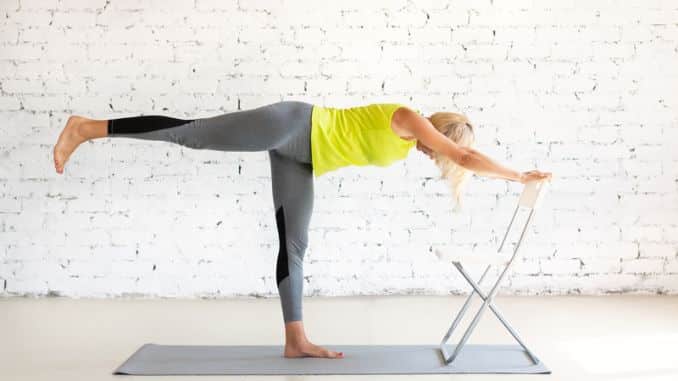When you think about balance, the first thing that might come to mind is the ability to stand on one leg for as long as possible. While this is certainly a good measure of balancing skills, there’s much more to it than that! A good balance enables you to move with poise and confidence. It also helps prevent falls at odd times and places, like slippery stairs or stepping on an uneven surface. These exercises can help improve your balance and stability and have a safer life.
For this routine, use a stable chair for balance whenever needed.
1. Feet Awareness
Begin in an upright standing position with your feet hip-width apart, maintaining good alignment with your head, shoulders, hips, and legs. Roll your shoulders up, back, and down. Find a focal point in front of you or close your eyes. Draw your attention to your feet and how you’re standing. Lift and spread out your toes and wiggle them a little bit. Press your 10 toes into the floor, then the ball of your foot. Draw your attention to your heels and press them down evenly. Contract your legs and pull up into your core. Clear your mind, let go of whatever’s going on in your mind at the moment, and concentrate on your focal point. Take several deep belly breaths, in through your nose and out through your mouth, releasing all of your tension on the exhales. Return to the starting position.
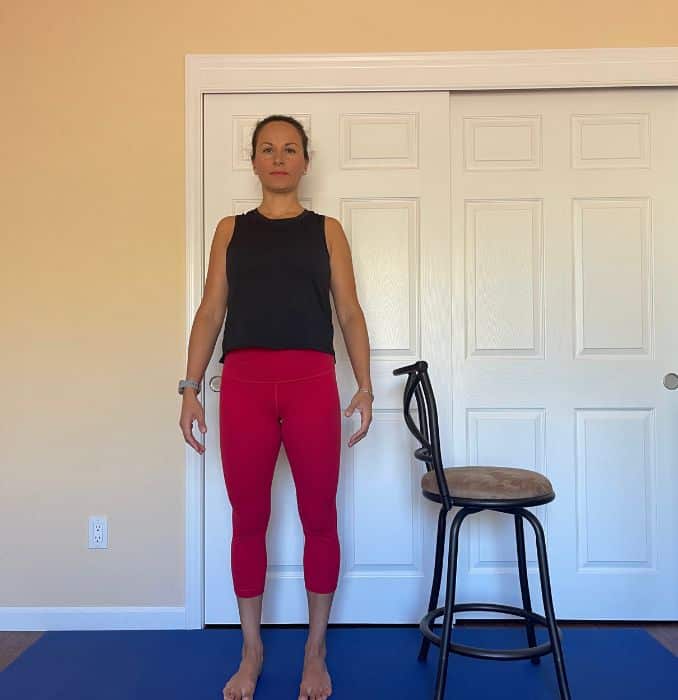
2. Knee Lifts
Begin in an upright standing position with your feet hip-width apart, maintaining good alignment with your head, shoulders, hips, and legs. Find a focal point right in front of you. Shift your weight to one foot, engaging your hip. Lift one knee, ideally to hip height, and hold this position for several seconds. Lower your foot back down to the starting position. Repeat the movement on the opposite side.
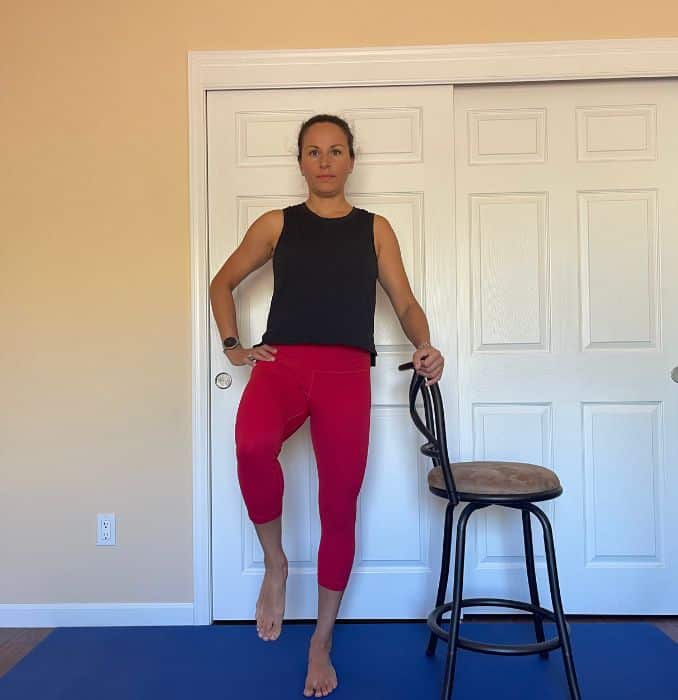
3. Rocking from Heels to Toes
Begin in an upright standing position with your feet hip-width apart, maintaining good alignment with your head, shoulders, hips, and legs. Engage your core and place one hand on the chair for necessary balance. Rock back and forth from your toes to your heels. Repeat the movement.
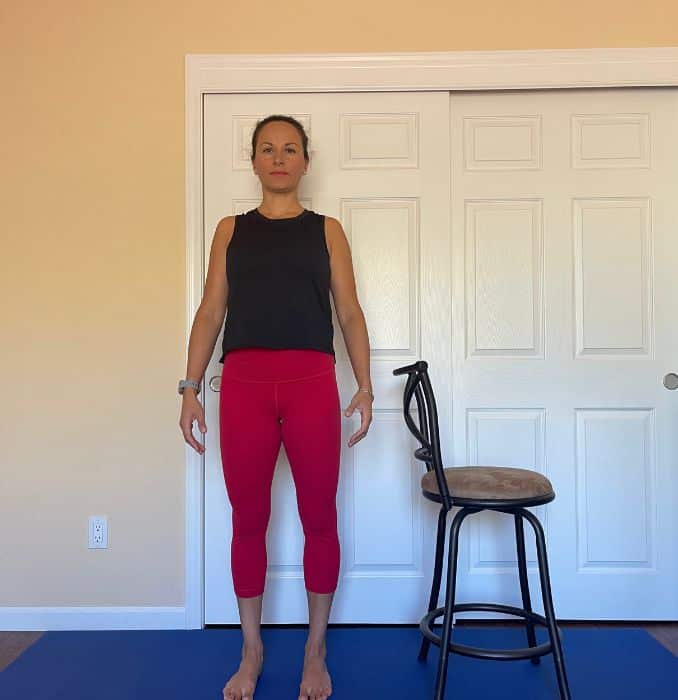 |
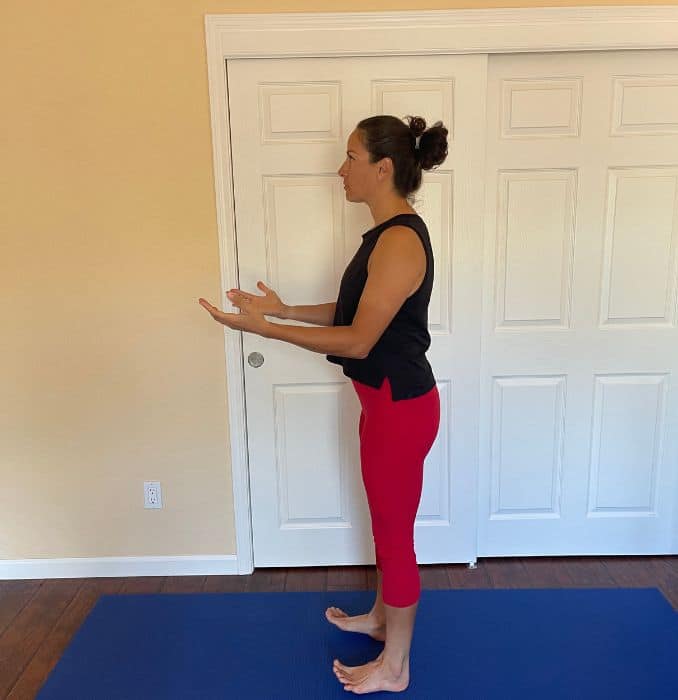 |
4. Tree Pose
Begin in an upright standing position with your feet hip-width apart, maintaining good alignment with your hip, shoulders, head, and legs. Engage your core. Bend one knee and plant your foot along the inside of your opposite leg, around ankle height with your toes on the floor. Maintain your balance and hold this position for several deep belly breaths, in through your nose and out through your mouth. Repeat the movement on the opposite side.
To make this exercise more challenging, plant your foot higher on your supporting leg, either slightly above or slightly below your knee joint.
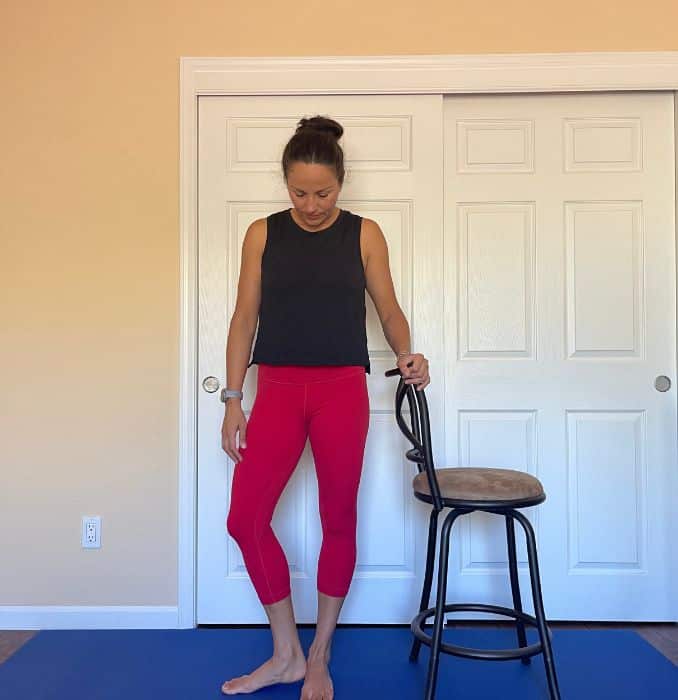 |
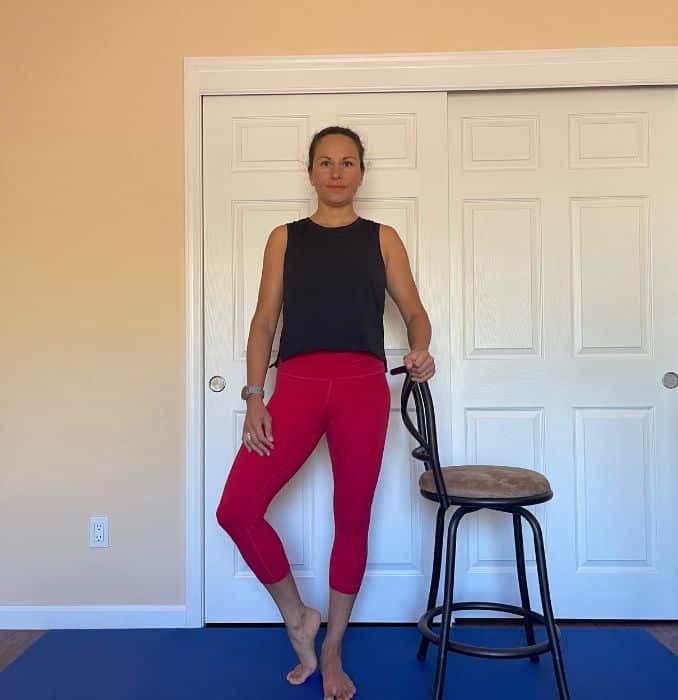 |
5. Toppling Tree Progression
Begin in an upright standing position with your feet hip-width apart, maintaining good alignment with your head, shoulders, hips, and legs. Engage your core and hold onto the back of your chair for support. Shift your weight onto one leg, extend your opposite leg behind you and plant your toes on the floor. Return to the starting position. Repeat the movement, experimenting with lifting your leg higher, and relying less on your chair for support. At the highest progression, your extended leg and upper body will be parallel to the floor with your arms extended towards your leg.
 |
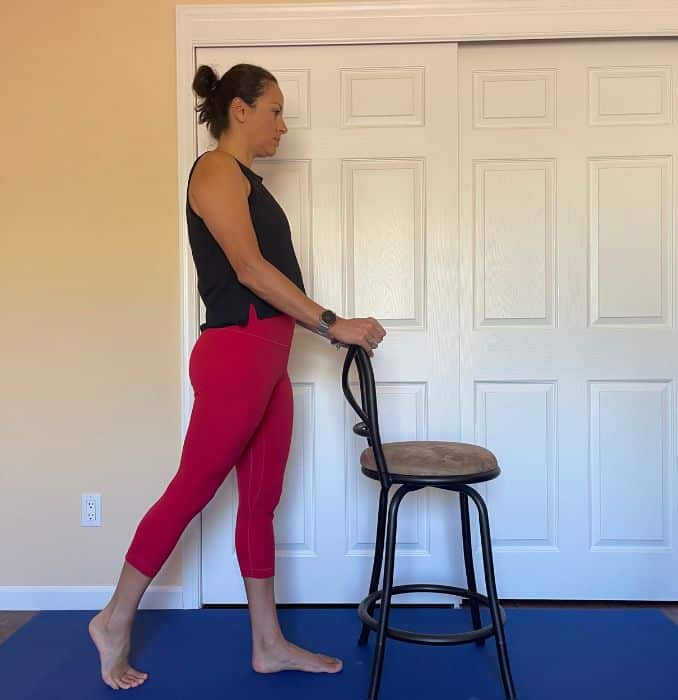 |
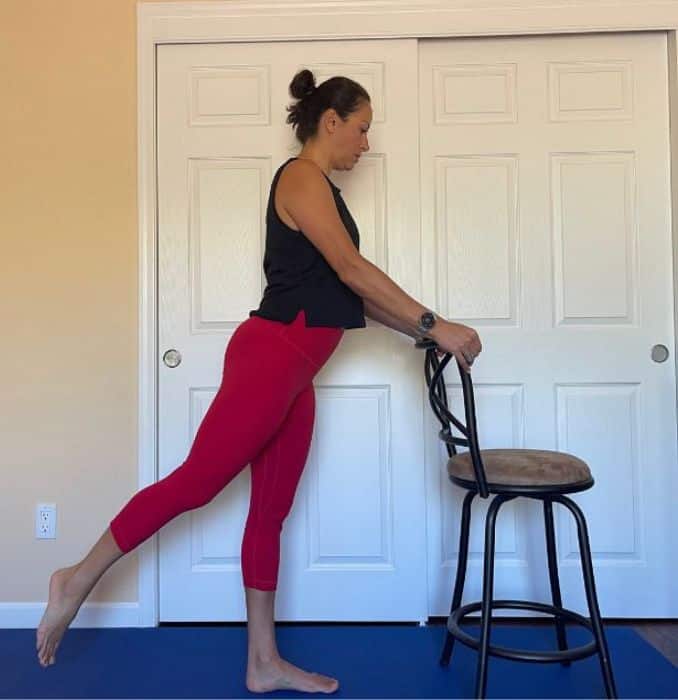 |
One of the best ways or exercises to improve your balance and stability is by practicing regularly. Try challenging your balance (safely) several times each day. Use a chair, mantle, or railing for support whenever needed, and progress by relying less on this support as your confidence and stability improve. You cannot underestimate the importance of good balance, especially as you age. Being solid and stable is the key to remaining injury-free and independent.

